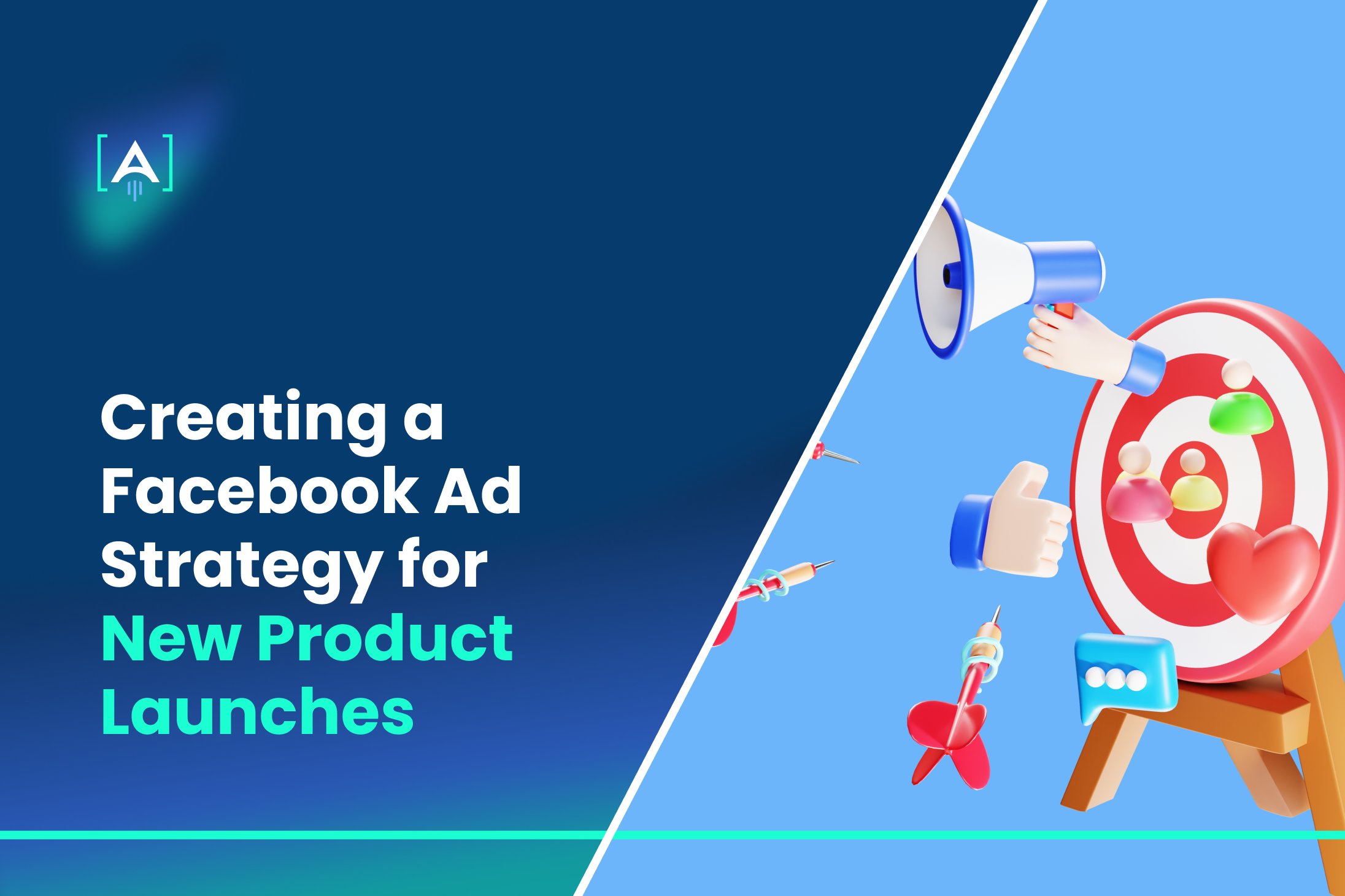Are you ready to launch your new product but unsure how to make it stand out in a crowded market?
In today’s digital landscape, a well-crafted Facebook ad strategy can be the key to unlocking exceptional success.
With over 2.8 billion monthly active Facebook users, the platform offers small and large businesses an unprecedented opportunity to reach a vast and targeted audience.
But what separates a successful Facebook ad campaign from one that falls flat?
The answer lies in understanding and implementing an effective Facebook advertising strategy tailored to your unique business needs.
According to recent studies, businesses that optimize their Facebook ad strategies see an average return on investment (ROI) of 152%.
Whether you’re a small business or an established enterprise, leveraging the right approach can transform your product launch into a resounding success.
To achieve this, consider partnering with a Facebook Ads Agency specializing in data-driven, results-oriented campaigns.
By aligning your Facebook ad strategy with expert guidance, you can maximize your ad spend and achieve your business goals more efficiently.
In this article, we’ll walk you through a step-by-step guide to creating a cutting-edge Facebook ad strategy that drives real results.
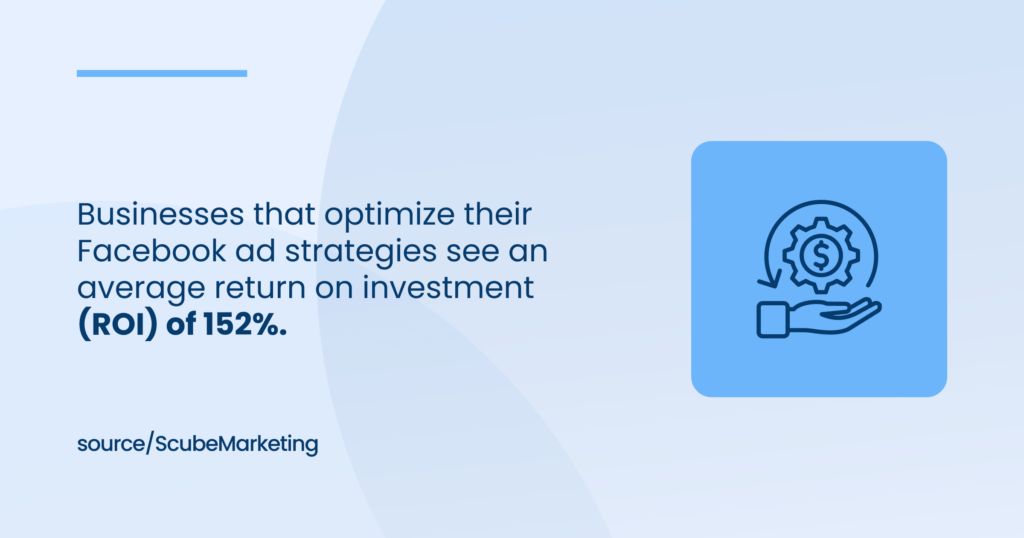
Understanding Your Audience
When crafting a successful Facebook ad campaign, understanding your audience is crucial. T
The more you know about who you’re targeting, the better you can tailor your Facebook ads to resonate with potential customers.
Let’s say you’re launching a new line of eco-friendly running shoes that are lightweight, durable, and made from sustainable materials.
Your target audience might include environmentally-conscious consumers, fitness enthusiasts, or trend-savvy millennials.
To reach these groups effectively, you should focus on Facebook advertising strategies that speak directly to their values and interests.
Segmenting Your Audience: Start by creating distinct customer personas. For example, one persona could be “Eco-conscious Emma,” a 28-year-old woman who prioritizes sustainability in purchasing decisions.
Another could be “Fitness-focused Frank,” a 35-year-old marathon runner looking for high-performance gear. By understanding the different motivations behind each segment, you can create targeted Facebook ad strategies that appeal to their specific needs. Even Google agrees.
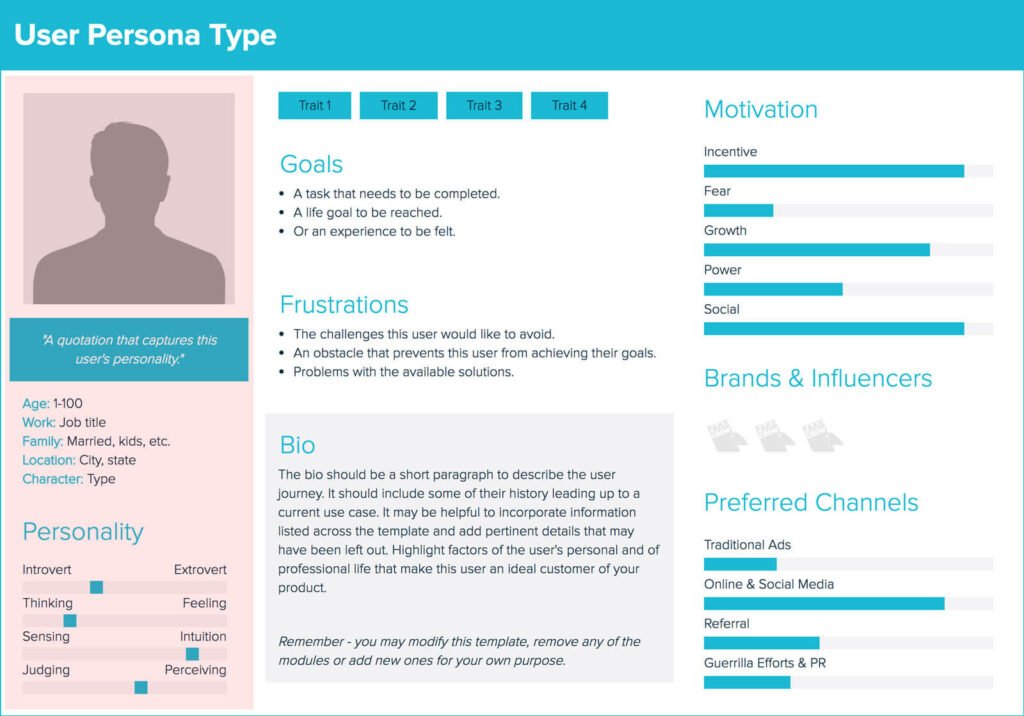
Source: SocialmediaExaminer
You are using Facebook’s Audience Tools: Leverage tools like Custom Audiences and Lookalike Audiences within your Facebook ad account to reach people who are most likely to be interested in your new product.
For instance, you can make a custom audience based on previous customers who are interested in eco-friendly products. You can then use Lookalike Audiences to find other Facebook users with similar behaviors and preferences.
Crafting Relevant Ad Content: Your Facebook ad content should directly answer the needs of your target audience. For “Eco-conscious Emma,” highlight the sustainable materials and environmental impact of your shoes.
For “Fitness-focused Frank,” emphasize the shoes’ durability and performance-enhancing features. Incorporate visuals and messaging that align with these values to ensure your Facebook ads are both engaging and effective.
Optimizing for Different Formats: Different segments of your audience may respond better to different types of Facebook ads. For example, video ads showcasing the manufacturing process of the eco-friendly shoes might resonate more with “Eco-conscious Emma,” while a carousel ad displaying the shoes in action might appeal more to “Fitness-focused Frank.”
Testing various formats within your Facebook ad campaign can help determine what works best for each audience segment.
Retargeting Interested Users: Use retargeting to engage users who have interacted with your Facebook page or website but haven’t yet made a purchase.
For example, if “Eco-conscious Emma” visited your website but didn’t complete her purchase, you can use retargeting Facebook ads to remind her of the shoes and offer a discount to encourage conversion.
By tailoring your Facebook advertising efforts to the particular characteristics and behaviors of your target audience, you can create more impactful Facebook ad campaigns that drive better results.
This audience-centric approach ensures that your Facebook ad strategies are matching with the needs and desires of your customers, in the end leading to higher engagement and conversion rates.
Crafting the Creative
Creating compelling ad creatives is essential for a successful Facebook ad campaign. Your ad creative is often the first impression potential customers have of your product, so it’s crucial to make it count.
Choosing the Right Ad Formats
When selecting ad formats, it’s essential to consider what will catch the eye of your target audience. Different audiences respond better to other types of Facebook ads. For example:
- Facebook Video Ads: If you’re launching a new line of eco-friendly running shoes, video ads can be a powerful tool to showcase the product in action. A well-produced video that highlights the shoes’ sustainable materials and performance features can capture the attention of environmentally-conscious and fitness-focused audiences.
- Carousel Ads: This format lets you display more than one image or video in a single ad, which is perfect for showcasing various features or styles of your product. For example, you could create a carousel ad that highlights the durability, comfort, and eco-friendly materials of your shoes.
Crafting Compelling Facebook Ad Copy
Your Facebook ad copy should be concise, engaging, and tailored to your target audience. It should communicate the unique selling points (USPs) of your product while addressing the needs and desires of potential customers.
- Engaging Headlines: Start with a strong, attention-grabbing headline that immediately conveys the value of your product. For example, “Run Light, Tread Right – Discover Our Eco-Friendly Running Shoes.”
- Persuasive Body Text: Use the body text to expand on the benefits of your product. Highlight what makes your product unique: “Crafted from 100% recycled materials, our running shoes are designed for both performance and sustainability.”
- Clear Call to Action (CTA): Include a clear and compelling CTA that encourages Facebook users to take the next action, whether it’s “Shop Now,” “Learn More,” or “Get Yours Today.”
A/B Testing Your Facebook Ad Creative
A/B testing is an undeniable way to optimize your Facebook ad strategies. By testing different types of your ad creative, you can understand what connects most with your audience and drives the best results.
- Test Variations: Experiment with different headlines, images, and CTAs in your Facebook ads. For example, you might test whether a video or carousel ad generates more engagement or whether a headline focused on sustainability or performance drives more clicks.
- Analyze Results: Use Facebook’s ad manager to analyze the performance of each variation. Look at metrics, be it click-through rates (CTR), conversion rates, or engagement to see which version of your Facebook ad performs best.
- Optimize Based on Data: Once you’ve identified the top-performing ad creative, focus your budget on that version to maximize the effectiveness of your Facebook ad campaign.
Incorporating Visual Storytelling
Visual storytelling is a powerful technique in Facebook advertising that can make your ad stand out and connect emotionally with your audience.
- High-Quality Imagery and Video: Invest in high-quality visuals that showcase your product in real-world settings. For example, use videos and photos of athletes using your athletic wear in various terrains in everyday life or just do a photoshoot, just like Skims did for the USA team for the 2024 Olympics.
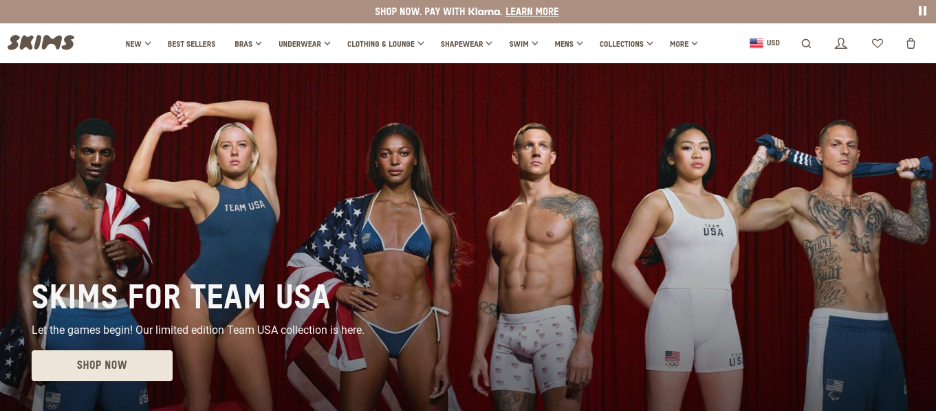
Source: Skims
- Consistency Across Platforms: Ensure that your visuals and messaging are constant across all platforms, including your Facebook page and other marketing channels, to create a cohesive brand image.
By carefully crafting your Facebook ad creative and continuously testing and optimizing, you can create compelling and effective Facebook ads that capture your audience’s attention and drive results.
Whether you’re using video ads, carousel ads, or other formats, a well-thought-out creative strategy is key to the successful Facebook ad campaign.
Budgeting and Bidding Strategy
Effective budgeting and bidding are essential components of a successful Facebook ad strategy. Properly managing your budget ensures you maximize your ad spend, reach your target audience, and achieve your campaign objectives without overspending.
Allocating Your Budget Across Ad Campaigns
When setting up your Facebook ads, allocating your budget wisely across different ad campaigns is crucial. The allocation should be based on your overall objectives, whether it’s brand awareness, lead generation, or driving conversions.
- Prioritize High-Impact Campaigns: Focus the majority of your budget on the Facebook ads that align most closely with your key objectives. For instance, if you’re launching a new product, you might relocate a more significant portion of your budget to video ads that highlight the product’s unique features.
- Reserve Funds for Testing: Allocate a portion of your budget to test different Facebook ad strategies. This allows you to experiment with various ad formats, ad copy, and targeting options to identify what works best for your target audience.
- Adjusting Based on Performance: Use real-time data from Meta Ads Manager to monitor the performance of your ad campaigns. If certain campaigns are outperforming others, consider reallocating the budget from underperforming ads to those delivering better results.
Bidding Strategy: Getting the Most Out of Your Ad Spend
Choosing the right bidding strategy is key to optimizing your ad spend and making sure that your ads reach the right Facebook users at the right cost.
- Cost Per Click (CPC) vs. Cost Per Impression (CPM): Depending on your campaign goals, decide whether to optimize for clicks or impressions. For example, if your goal is to drive traffic to your Facebook page or website, CPC might be the better option. On the other hand, if you’re focusing on brand awareness, CPM could be more appropriate.
- Manual vs. Automatic Bidding: Meta Ads Manager offers manual and automatic bidding options. Manual bidding gives you more control over the payment per action, which can be useful for high-competition keywords or specific target audience segments. Automatic bidding, meanwhile, allows Facebook to adjust bids to maximize results within your budget.
- Bid Cap and Cost Cap: If you have a strict budget, consider setting a bid cap or cost cap to ensure that you don’t overspend. This is particularly useful when running multiple ad campaigns within the same ad account.
Optimizing Budget Based on Audience Segmentation
Different segments of your target audience may require different budget allocations to achieve the best results.
- High-Value Audiences: Allocate more budget to segments that are likely to generate the highest ROI, such as past customers or lookalike audiences who closely match your best customers.
- Cold Audiences: While reaching new Facebook users is important, you might start with a smaller budget for cold audiences. As you gather data, you can adjust your budget based on how these segments respond to your Facebook ads.
Integrating with Other Platforms
To ensure a cohesive marketing approach, consider how your Facebook marketing strategies integrate with other platforms like Google Ads. Cross-channel strategies can help reinforce your message and maximize your overall marketing impact.
- Unified Bidding Strategy: If running both Google Ads and Facebook ads, ensure your bidding strategies are aligned. This means considering how your budget is distributed across platforms and making adjustments based on which platform drives the most conversions.
- Consistent Budget Monitoring: Use tools like Meta Ads Manager and Google Ads to monitor your campaigns in real-time. This allows for quick adjustments to bids and budget allocations based on performance data.
Continuous Monitoring and Adjustment
Your budgeting and bidding strategy should be dynamic. Regularly monitor your ad campaigns using Meta Ads Manager to track performance against your objectives. Make adjustments to your budget and bids as needed to optimize results.
- Daily and Weekly Reviews: Set up regular check-ins to review critical metrics such as cost per conversion, click-through rate (CTR), and overall ad spend. This will help you identify trends and decide where to allocate your budget.
- Scaling Successful Campaigns: If certain Facebook ads perform exceptionally well, consider increasing the budget to scale those campaigns while maintaining a profitable ROI.
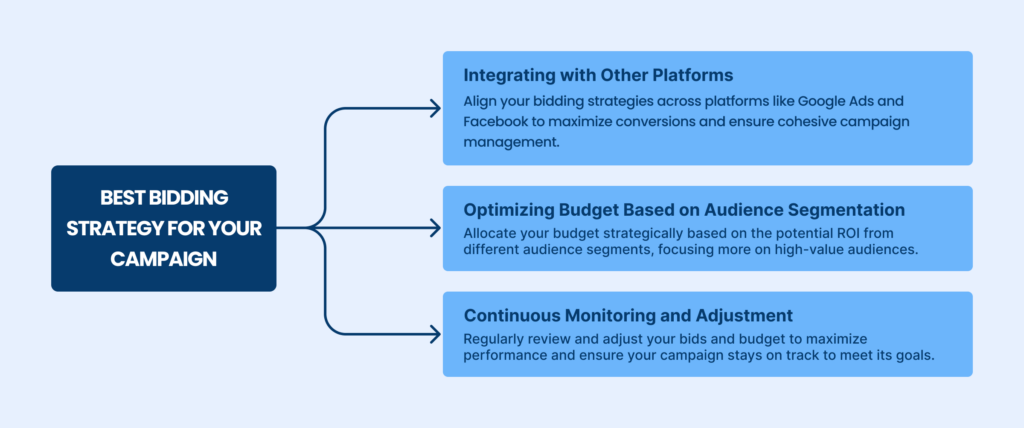
By carefully planning and continuously optimizing your budgeting and bidding strategies, you can level up the impact of your Facebook ad strategy. This approach ensures you reach your target audience, manage your ad spend efficiently, and ultimately achieve your campaign goals.
Launching and Monitoring the Campaign
Once your Facebook ad campaign is set up, the next step is to launch and closely monitor its performance to ensure you’re reaching your target audience effectively.
Initial Launch
When launching, start by deploying a mix of Facebook ads—including video ads and carousel ads—to see which formats resonate best with your audience.
Make sure your ad account is organized and has clear objectives and budget limits set in Meta Ads Manager.
Real-Time Monitoring
Immediately after launching, use Meta Ads Manager to check key metrics such as engagement, clicks, and conversions.
Keep an eye on your ad spend and make sure your ads are delivering results without overspending. Regularly review performance to identify which facebook ad strategies are working best.
Optimizing Based on Performance
If certain Facebook ads are underperforming, tweak your ad copy, adjust your bids, or reallocate the budget to higher-performing ads.
Continuous monitoring helps you make data-driven decisions that enhance the effectiveness of your ad campaigns.
Scaling and Adjusting
As you gather data, scale successful ad campaigns by increasing the budget or expanding your target audience.
Simultaneously, pause or revise ads that aren’t meeting your goals to maximize the overall ROI of your Facebook marketing strategies.
By maintaining a vigilant approach to monitoring, you can ensure that your Facebook ads remain true to your objectives and continue to drive meaningful results throughout the campaign.
Post-Launch Analysis and Iteration
Once your Facebook ad campaign has concluded, the work doesn’t stop.
The post-launch phase is critical for understanding how well your campaign performed and identifying areas for improvement in future campaigns.
This process involves thoroughly analyzing campaign data, integrating customer feedback, and iterating on successful strategies.
Campaign Performance Review
The first step in the post-launch analysis is to evaluate the overall success of your Facebook ad campaign. Use Meta Ads Manager to review key performance metrics:
- Conversions: How many users did the desired action (e.g., purchase, sign-up)? This metric will show whether your campaign effectively drove results.
- Click-Through Rate (CTR): This indicates how compelling your ad copy and creative were. A high CTR means your ads were relevant and engaging to your target audience.
- Return on Ad Spend (ROAS): This is crucial for understanding your campaign’s financial return. Calculate the revenue generated from your ads against the total ad spend.
- Engagement Metrics: These include likes, shares, comments, and video views. High engagement suggests that your content resonated well with Facebook users.
Compare these metrics against your initial objectives to assess whether your campaign met its goals. For example, if you aimed to increase sales by 20%, measure your actual sales increase to see if you hit the target.
Customer Feedback Integration
Customer feedback is invaluable for refining your future Facebook ads. After the campaign ends, gather feedback from customers who interacted with your ads or purchased your product.
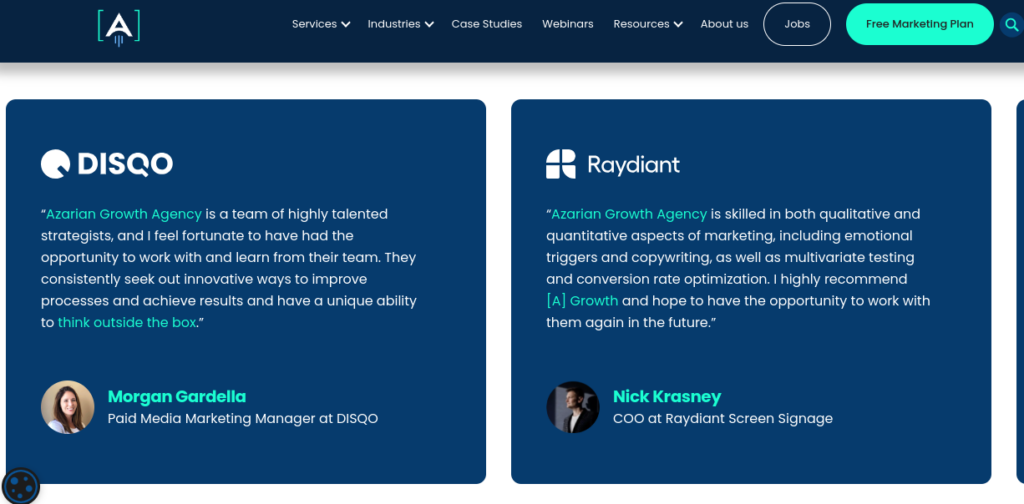
Source: Azarian Growth Agency
This feedback can give you valuable information into what aspects of your ad copy, isuals, or product offering were most appealing.
- Ad Copy Refinement: If customers find your messaging unclear or unconvincing, use this feedback to improve your ad copy in future campaigns. For instance, if customers were drawn to a particular benefit of your product that wasn’t highlighted enough, emphasize that feature more prominently next time.
- Creative Adjustments: Feedback on your creative elements, such as images or video ads, can help you understand what visual content resonates most. If users were particularly engaged with a specific type of visual content, consider using similar styles or themes in your next ad campaign.
Scaling Successful Campaigns
Once you’ve identified which Facebook ads were most successful, consider scaling them to reach a broader audience or generate more results.
- Budget Reallocation: Increase the budget for high-performing ads. You can amplify your results by putting more resources into what’s already working. For example, if a particular video ad generates a significant number of conversions, allocate more of your budget to boost this ad.
- Expanding Target Audience: If your ads performed well within a specific audience segment, use custom audiences or lookalike audiences to expand your reach. This helps you tap into new potential customers who are likely to respond similarly.
- Continuous Monitoring: Even after scaling, continue to monitor the performance of these ads. Use Meta Ads Manager to track any changes in performance metrics and adjust your strategy as needed.
Iterative Improvement
The insights gained from your post-launch analysis should inform your next Facebook advertising strategy.
Take what you’ve learned and apply it to future campaigns, continually refining and improving your approach.
This iterative process ensures that each new campaign is more effective than the last, helping you to better achieve your business goals over time.
By conducting a detailed post-launch analysis and integrating customer feedback, you can refine your Facebook ads to be more targeted, engaging, and effective.
Scaling successful campaigns and applying lessons learned will position your future Facebook ad campaigns for even greater success.
Integrating with Other Marketing Channels
Integrating your Facebook advertising strategy with platforms like Instagram, Pinterest, and LinkedIn can significantly boost your product launch’s effectiveness by reaching a broader audience and reinforcing your brand across multiple touchpoints.
Cross-Channel Synergy
- Instagram: With its highly visual format, Instagram complements Facebook ads perfectly. Use story and collection ads to showcase your product’s features and engage a younger audience. Cross-promoting your Facebook ads on Instagram ensures consistent engagement and broader reach.
- Pinterest: Pinterest is excellent for product discovery, particularly in eCommerce. Its users are highly engaged in planning purchases, making ad placements on Pinterest a great way to attract new customers. By aligning your Facebook lead ads with Pinterest’s visual appeal, you can seamlessly guide users from inspiration to purchase.
- LinkedIn: For B2B and professional services, LinkedIn is a key platform. Promote your product via your LinkedIn business page to reach decision-makers. Integrate this with your Facebook marketing to target both professional and consumer audiences effectively.
Consistent Messaging
- Unified Branding: Maintain consistent visuals and messaging across all platforms to strengthen brand recognition. Whether it’s Facebook ads, Instagram posts, or LinkedIn articles, consistency ensures your audience receives a cohesive brand experience.
- Coordinated Campaigns: Launch your Facebook campaign in sync with other platforms to maximize impact. Be sure that your ad copy and visuals are consistent, reinforcing your message no matter where your audience encounters it.
Leveraging Analytics
- Cross-Platform Insights: Use tools like Facebook Ads Manager and LinkedIn Analytics to track performance across channels. Regularly review metrics like engagement and conversion rates to refine your strategy.
- Optimize and Scale: Adjust your ad budget and focus on the most effective platforms based on performance data. This iterative process will let you continuously improve your overall marketing efforts.
By integrating your Facebook advertising strategy with other platforms, you create a powerful, unified marketing approach that enhances your product launch’s reach and effectiveness, driving stronger results across the board.
Ready to Elevate Your Next Product Launch? Partner with Azarian Growth Agency!
Launching a new product is a critical moment for any business, and the right strategy can make all the difference.
By implementing a comprehensive Facebook advertising strategy and integrating it with other powerful marketing channels like Instagram, Pinterest, and LinkedIn, you can ensure your product gets the visibility and engagement it deserves.
At Azarian Growth Agency, we specialize in creating effective Facebook ads that drive results.
As a leading Facebook Ads Agency, we’re here to help you craft a customized strategy that leverages the full potential of your marketing efforts.
Whether you’re looking to boost brand awareness, generate leads, or increase sales, our expert team will work with you to achieve your business goals.
Don’t leave your product launch to chance.
Contact Azarian Growth Agency today, and let us take your next campaign to new heights.
